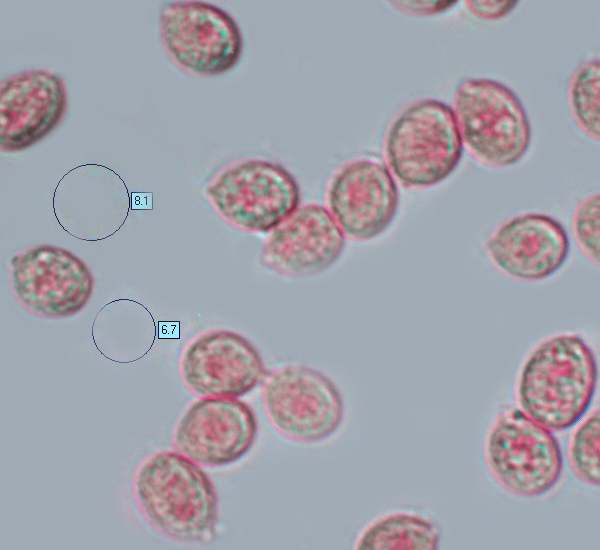Mycena haematopus (Pers.) P. Kumm. - Burgundydrop Bonnet
Phylum: Basidiomycota - Class: Agaricomycetes - Order: Agaricales - Family: Mycenaceae
Distribution - Taxonomic History - Etymology - Identification - Culinary Notes - Reference Sources
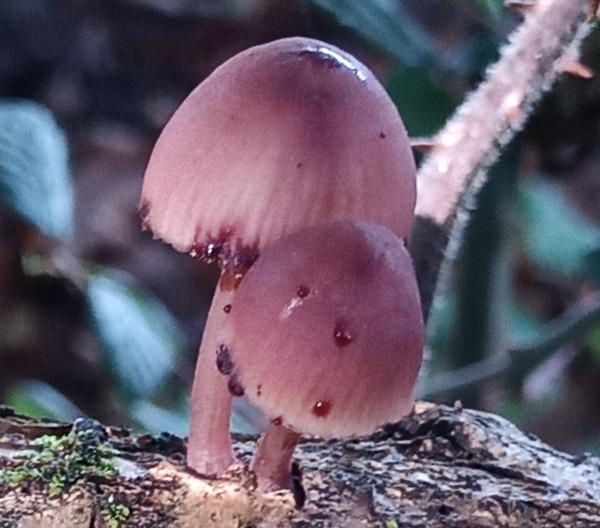
There are several Mycena species with pinkish caps, but what makes this one rather special is the dark red ‘blood’ that exudes from its cut flesh. The Burgundydrop Bonnet grows in fused tufts on dead hardwood stumps and trunks - oaks in particular - and only very occasionally on conifer stumps. The Burgundydrop Bonnet has been referred to in the past by several other common names including the Bleeding Bellcap, Bleeding Mycena, Bleeding Fairy Helmet and (in the USA) the Blood-foot Mushroom.
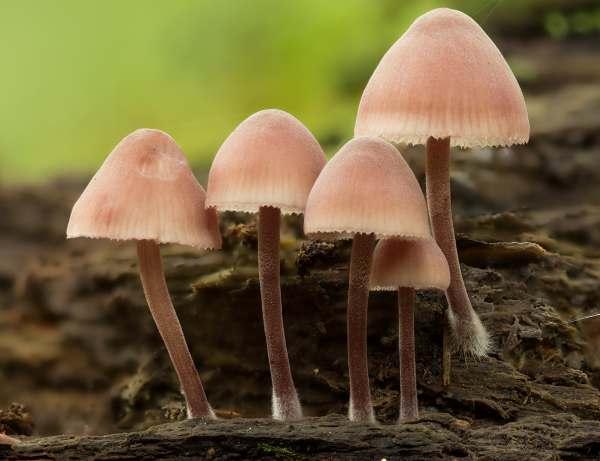
A similar but much smaller and more slender species, Mycena sanguinolenta, the Bleeding Bonnet, grows on forest-floor litter mainly under conifers.
Distribution
This wood-rotting mushroom is common throughout Britain and Ireland; it is also found throughout most of mainland Europe, much of Asia, and in many parts of North America.
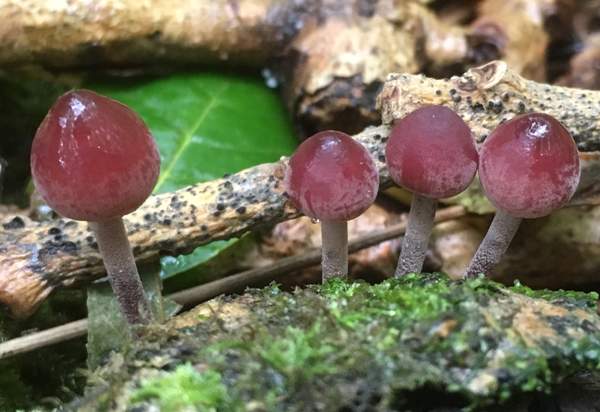
Cap colour is a poor guide to the identification of Mycena species, and the Burgundydrop Bonnet in particular. While some dry specimens of this wood-rotting fungus may have very pale caps, others are much more colourful, as the splendid specimens shown above testify. This photograph was taken by Colin Griffiths, in Jersey, to whom we are grateful for permission to show it here.
Taxonomic history
This species was described in 1799 by Christiaan Hendrik Persoon, who called it Agaricus haematopus - a name subsequently sanctioned by Elias Magnus Fries in 1821; it was moved to the new genus Mycena by Paul Kummer in 1871.
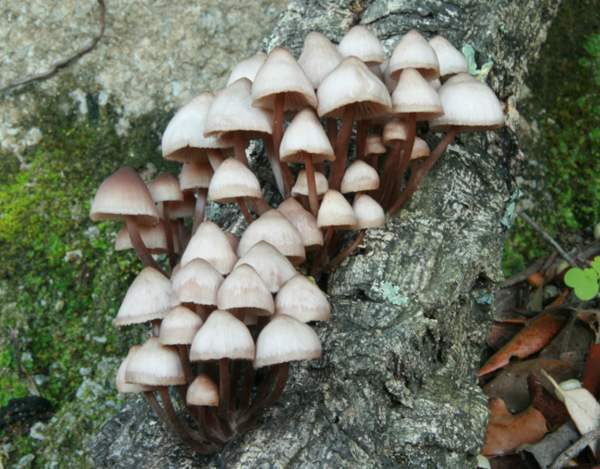
Synonyms of Mycena haematopus include Agaricus haematopus Pers., Galactopus haematopus (Pers.) Earle, and Mycena haematopus var. marginata J. E. Lange.
Etymology
The specific epithet haematopus comes from ancient Greek words haemato-, which means blood, and -pus, meaning foot (or leg) - a reference to the blood-like liquid which exudes from cut or broken stems.
Above: These Burgundy-drop Bonnets were seen fruiting on the end of a log in Cambridgeshire, England during the 2013 British Mycological Society's Autumn Foray. It is always worth searching wood piles for fungi, and in particular logs piled up in damp woodland. In the open, most of the fungi tend to emerge on the northern or eastern side rather on the south and west where the afternoon sun dries the timber.
Identification guide
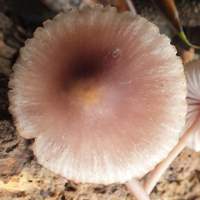 |
Cap2 to 4cm across at maturity, the caps of the Burgundyrdop Bonnet are initially conical, becoming bell shaped with a slight umbo; silky smooth; striate almost to centre when moist; usually pinkish-brown, sometimes reddish-brown, drying to pale greyish-pink. |
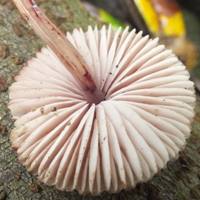 |
GillsAdnate or adnexed; white turning pale pink, the gills of Mycena haematopus are often darker at the edges, but not always so. |
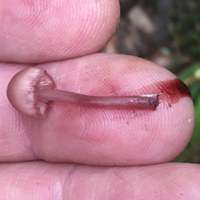 |
Stem4 to 7cm long and 2 to 3mm in diameter, the stems of Mycena haematopus are pinkish-brown; no ring. Blood-red liquid oozes from cuts. |
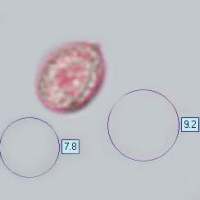 |
SporesEllipsoidal, smooth, 8-11 x 5-7µm; amyloid.
Spore printWhite. |
Odour/taste |
Not distinctive. |
Habitat & Ecological role |
Saprobic, on trunks and stumps and on fallen wood of deciduous broadleaf trees, particularly oaks, in well-shaded and damp locations; sometimes also on diseased parts of living trees. These lovely bonnet fungi are often found growing in tufts from cracks in the tough remains of large stumps and fallen trunks long after early-colonising fungi have consumed the bark and whatl they can of the softer cellulose tissues. |
Season |
June to November in Britain and Ireland. |
Occurrence |
Fairly common in most parts of Britain and Ireland, the Burgundydrop Bonnet also occurs throughout mainland Europe and in many parts of North America. |
Similar species |
Mycena polygramma has grooved stems. Mycena arcangeliana is distinguished by its iodine-like odour. |
Culinary Notes
These little mushrooms are reported in some field guides to be edible but of poor quality; however, the flesh is very thin and insubstantial.
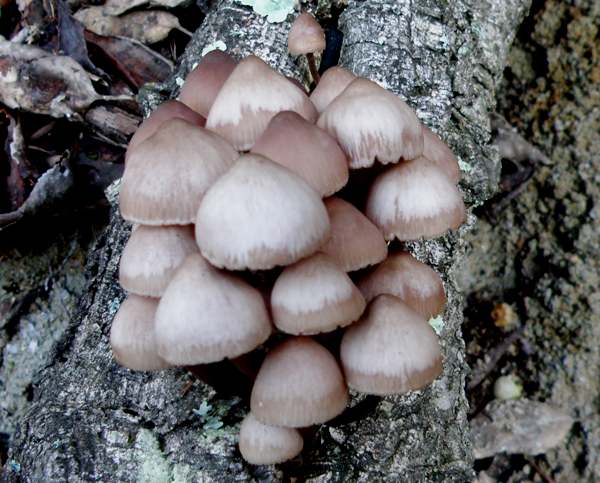
Reference Sources
Fascinated by Fungi, 2nd Edition, Pat O'Reilly 2016, reprinted by Coch-y-bonddu Books in 2022.
Penny Cullington, (Oct. 2013). British Mycenas - Brief Descriptions.
Giovanni Robich, (2003). Mycena d'Europa; Associazione Micologica Bresadola ; Vicenza : Fondazione Centro Studi Micologici.
British Mycological Society. English Names for Fungi
Dictionary of the Fungi; Paul M. Kirk, Paul F. Cannon, David W. Minter and J. A. Stalpers; CABI, 2008
Taxonomic history and synonym information on these pages is drawn from many sources but in particular from the British Mycological Society's GB Checklist of Fungi.
Acknowledgements
This page includes pictures kindly contributed by Abi Groos, Simon Harding and David Kelly.
Fascinated by Fungi. Back by popular demand, Pat O'Reilly's best-selling 450-page hardback book is available now. The latest second edition was republished with a sparkling new cover design in September 2022 by Coch-y-Bonddu Books. Full details and copies are available from the publisher's online bookshop...

